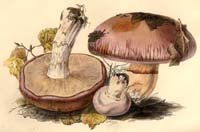 Key to Gilled Mushrooms Key
Key to Gilled Mushrooms KeyThis is a key to gilled mushrooms, that is, mushrooms having a definite cap with a fertile surface consisting of gills. The fruiting body usually also has a stem, although that may be lateral or absent (usually, then, the mushroom is growing from wood). You can use this key to identify mushrooms that you find.
Agaricales Order
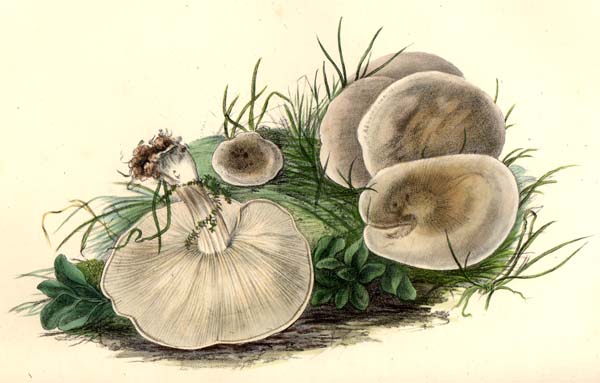
Diagnosis
Narrow down your identification:
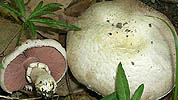 Agaricus Genus
Agaricus Genus- Gills free
-
Spore print chocolate brown
-
Annulus almost always present, usually membranous
-
The gills are usually pink or silvery-grey at first, but are colored chocolate brown at maturity from the developing spores
-
The cap and stalk are usually some sort of white or greyish brown, but may have fibrils or scales that are darker (like the portobello)
-
Growing on the ground, wood chips, or other organic debris
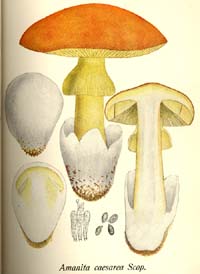 Amanita Genus
Amanita Genus- Fruiting body having a combination of some of the following characteristics:
-
Stalk growing out of a cup of cottony tissue called a volva (all white-spored mushrooms with a volva go here)
-
Cap with scattered patches or flakes of the same sort of tissue as the volva (see second picture), easily peeled off
-
Annulus (skirt-like ring on stalk)
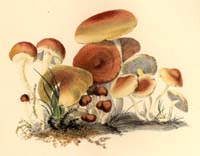 Black Spored Suborder
Black Spored Suborder- Spore print black, very dark brown, purplish black, or dark purplish brown, but not fitting the Gomphidiaceae
-
Gills usually light grey, becoming black from spores only when very mature
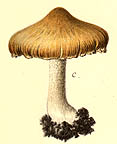 Brown, Olive, Orange or Tan Spored Suborder
Brown, Olive, Orange or Tan Spored Suborder- Gills not free
-
Spore print tan, orange, deep ochre, yellowish olive, olive brown, rusty or cinnamon brown or deep brown
-
Ring usually either absent or not membranous
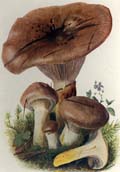 Gomphidiaceae Family
Gomphidiaceae Family
Pink Spored Suborder
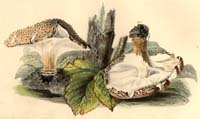 White Spored Suborder
White Spored Suborder- Spore print "light-colored": white or buff, sometimes tinged with pink or tan. Greenish and (except for the Russulales) yellow spore prints also go here
-
Stalk fibrous, not fracturing like a piece of chalk

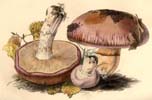


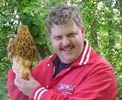

 Key to Gilled Mushrooms Key
Key to Gilled Mushrooms Key
 Agaricus Genus
Agaricus Genus Amanita Genus
Amanita Genus Black Spored Suborder
Black Spored Suborder Brown, Olive, Orange or Tan Spored Suborder
Brown, Olive, Orange or Tan Spored Suborder Gomphidiaceae Family
Gomphidiaceae Family White Spored Suborder
White Spored Suborder




